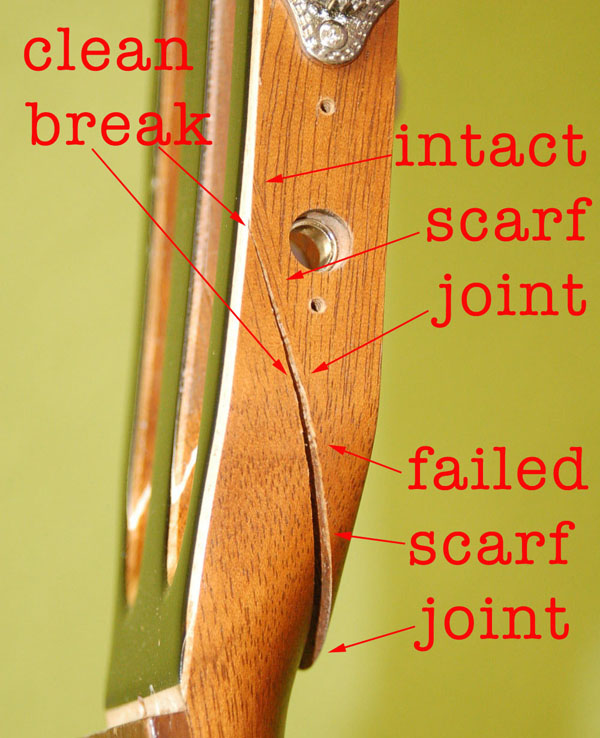Hi.
I have a Simon & Patrick with a classic smiley face headstock crack on the glue joint. It's open enough to get glue in but still whole on the face of the headstock. I checked with S&P and they tell me that they use Titebond to glue their headstocks. I believe that any re-gluing will require something that bonds into the wood to for a good join and that new Titebond to old Titebond is no good. Is this correct and can anyone confirm to me that the only real option is to re-glue with CA or is there any way that I can clean off the old glue enough to use my preference of hot hide or even Titebond? If you follow the grain line it appears that other than on the edge of the "smile", the break appears to have been in the wood rather than the glue joint so I'm hoping that with a little clean up, I might be able to avoid CA.
HELP PLEASE!
Dave
Views: 1193
- Attachments:
Replies to This Discussion
-
Just heard from the customer (a local music store) that Godin will take it on warranty; pay the shipping too!
-
Mine, I Mean
-
I see it as having broken along a scarf joint much of the way, though not all. The break seems to dive off the scarf up close to the face. And I think it's the kind of break that would have happened whether there was a joint there, or none at all. Since you can get it open that far, and since the actual joint that separated is easily accessible, I'd chemically clean the old glue out of the previously glued surfaces first. I think this is important because that part is doing most of the work—it needs to be really clean so the new glue can really get into the wood, and so you don't end up gluing old glue to old glue. That never lasts for long.
LMII sells a commercial product for this, but PVA glues dissolve quickly with acetic acid, which is a higher grade of distilled vinegar. Get it in there with a brush and work it. You'll see the old glue clabber up and turn white. Keep brushing until you have all the old glue off, then rinse it really well with plain water, to get the vinegar's acidity out of the wood. If left in, it will defeat the new glue.
Then let it dry thoroughly, so the grains not swollen. With the clean open grain, you're ready to go back the other way.
-
Fantastic advice Paul - really appreciated.
I've had a look but can't find anything on the LMII site - what is it called? I'm in the UK so getting stuff from LMII can be a bit difficult (impossible if a solvent). Does the LMII stuff clean out easier than ascetic acid (really worried about acid residue) or is using AA just the same?
Regards
Dave.
-
Dave, hmmm - I'm not finding it either. It's called De-glue Goo. I don't think it's very important, as it's just acetic acid in a more viscous form. Still just as much clean-up required, but even that is not a very big deal. You can smell its presence very easily.
You can get acetic acid at photo supply places, and white vinegar works just about as well. Don't use cider vinegar, as it often reacts with iron and permanently turns wood dark.
- ‹ Previous
- 1
- 2
- Next ›
© 2025 Created by Frank Ford.
Powered by
![]()
